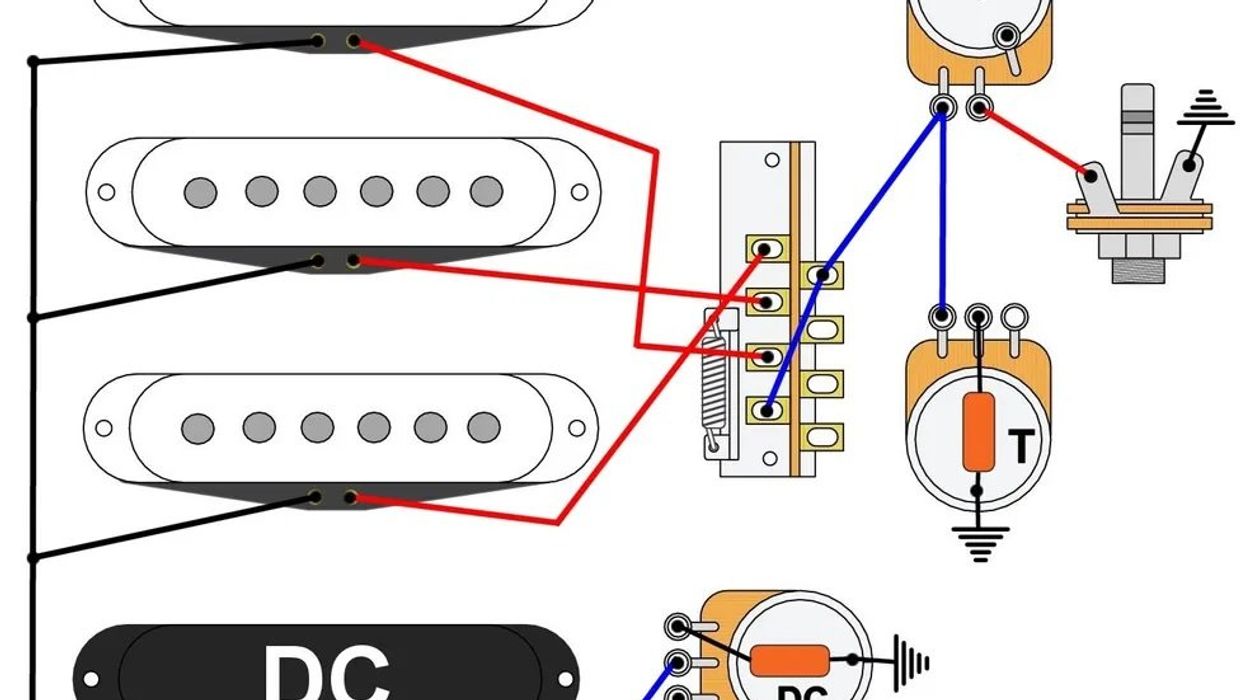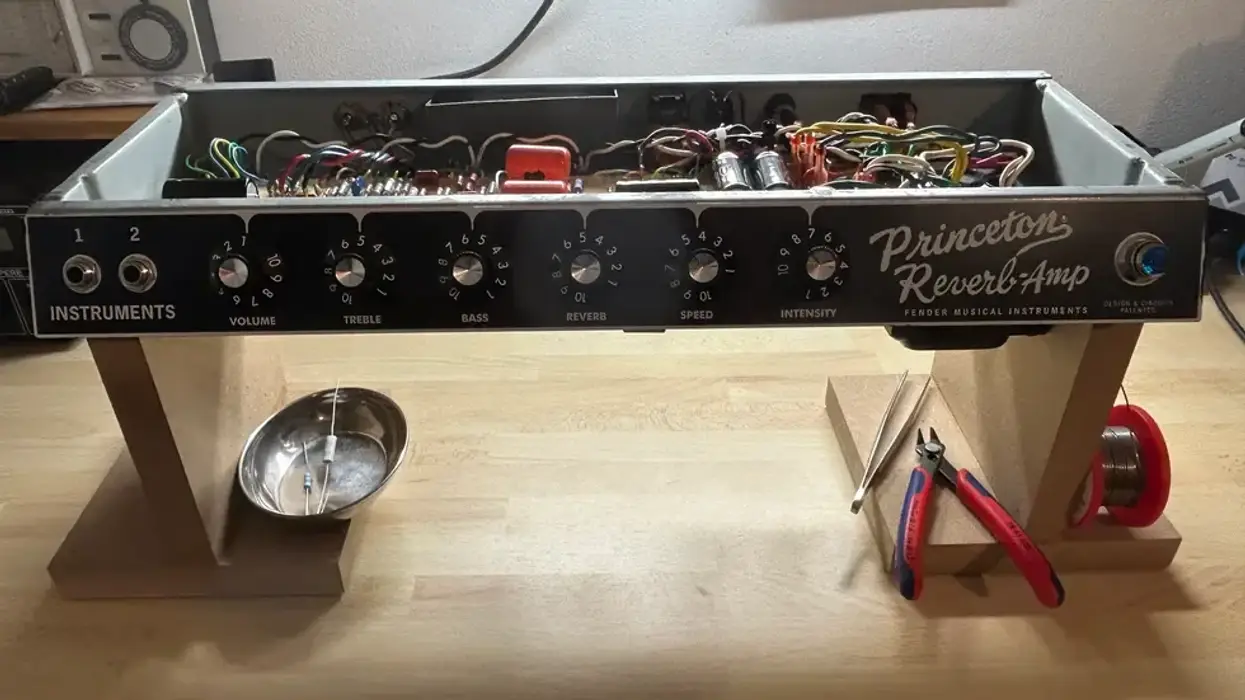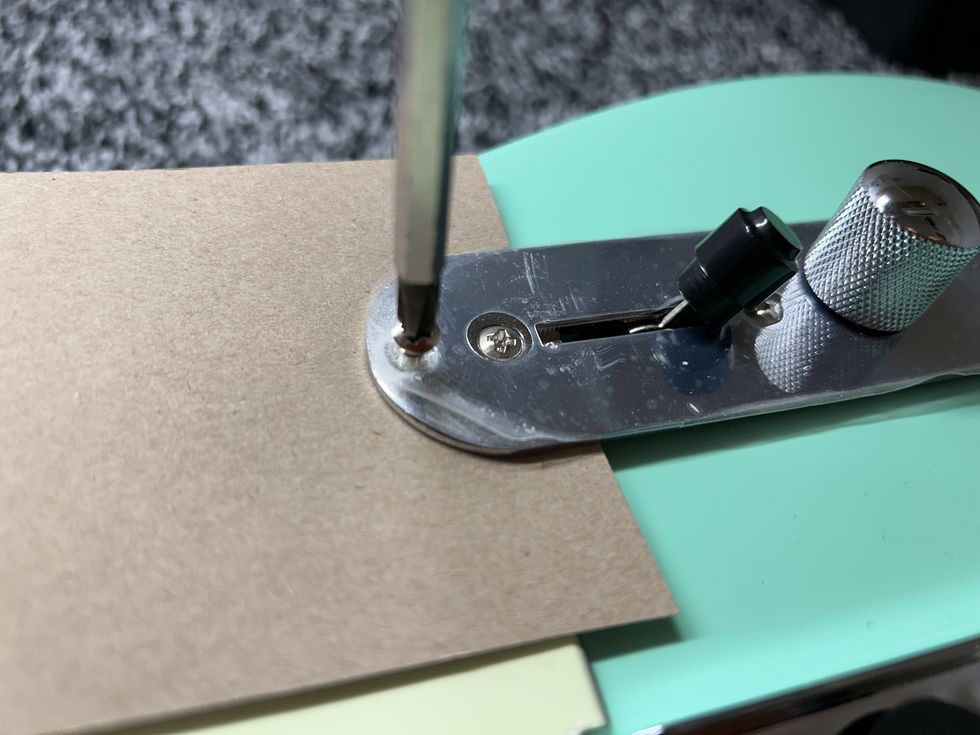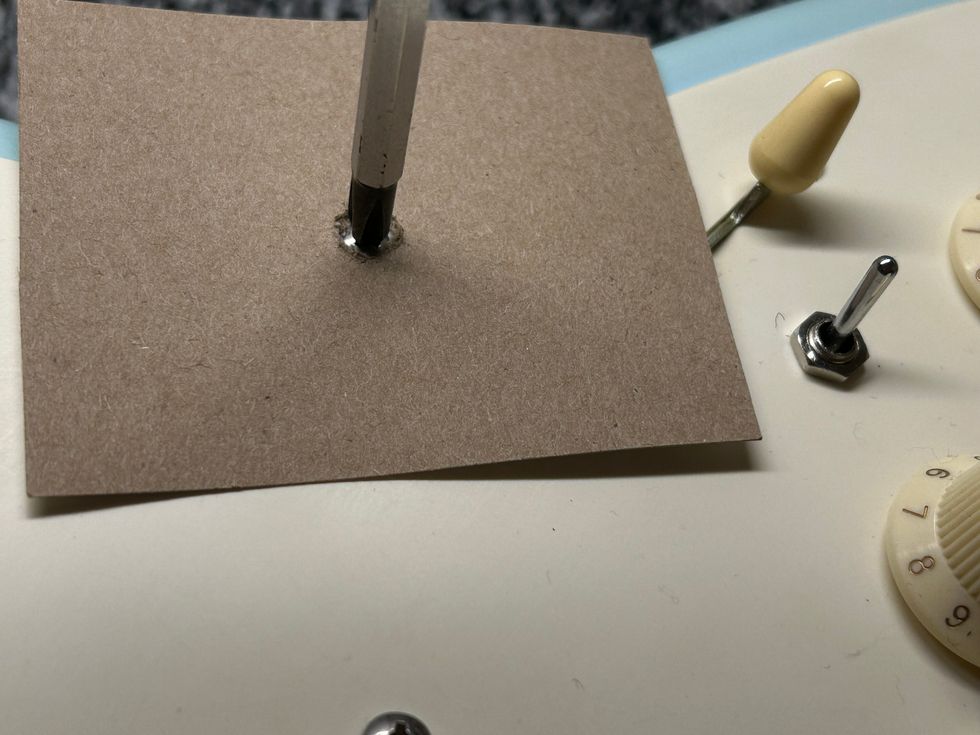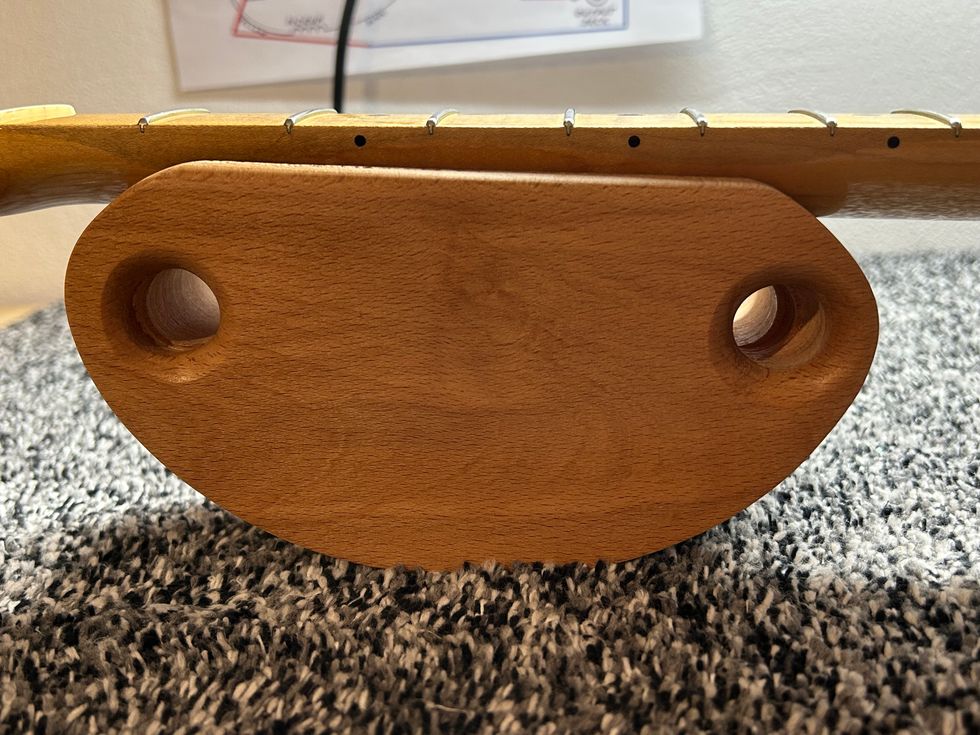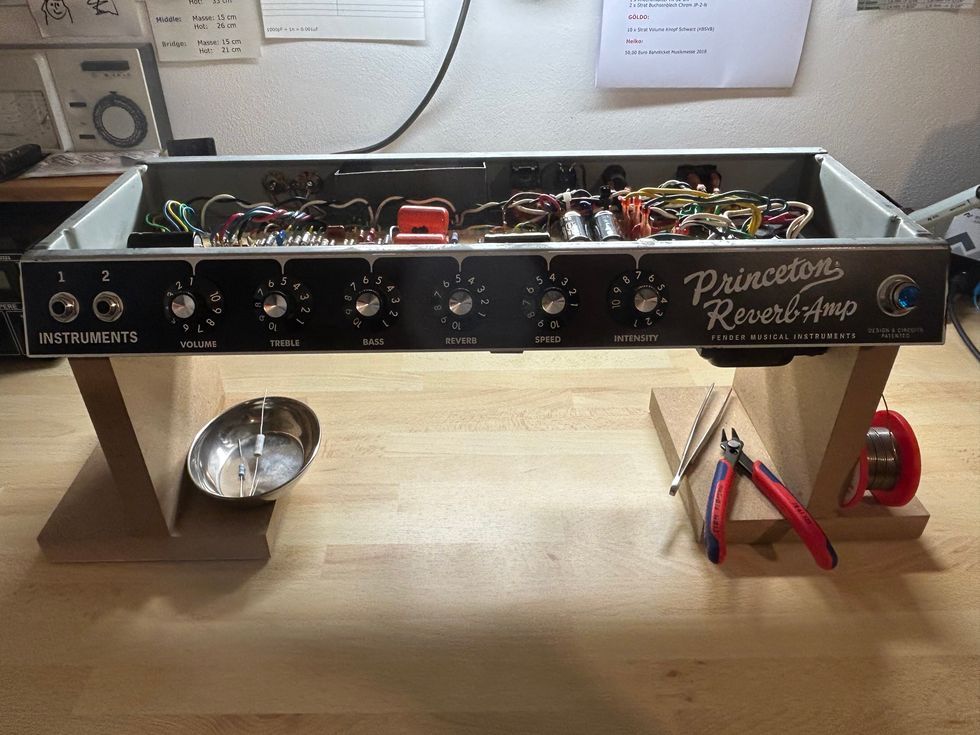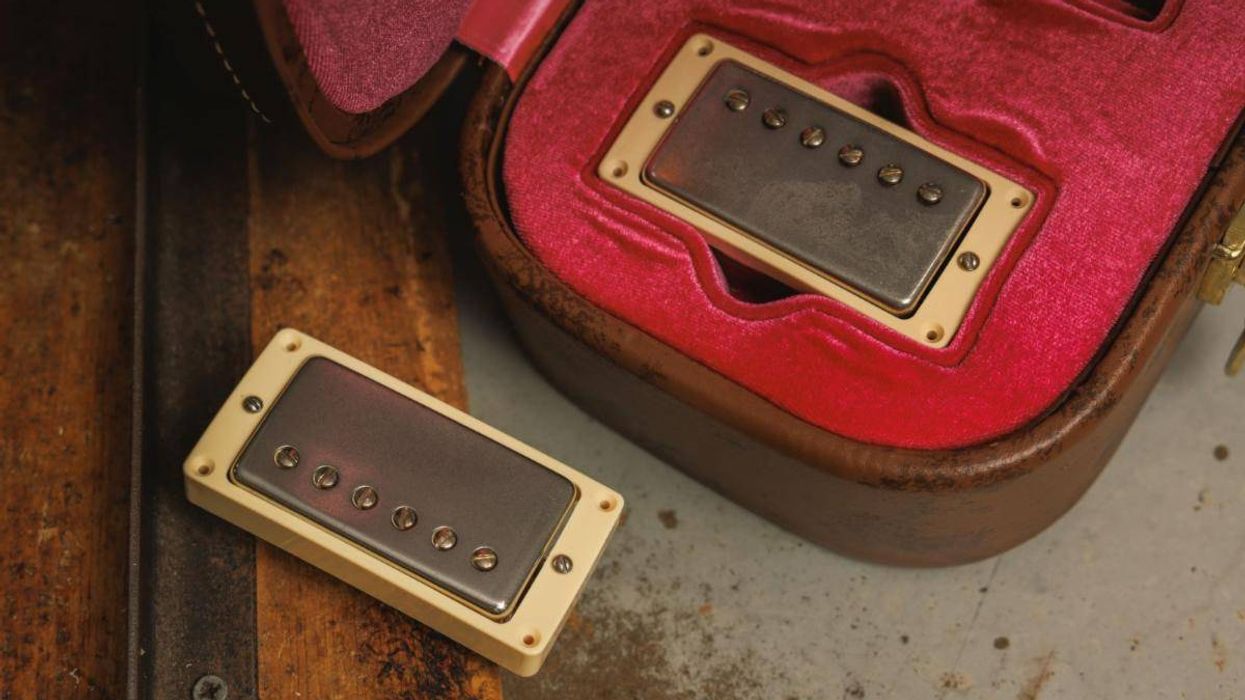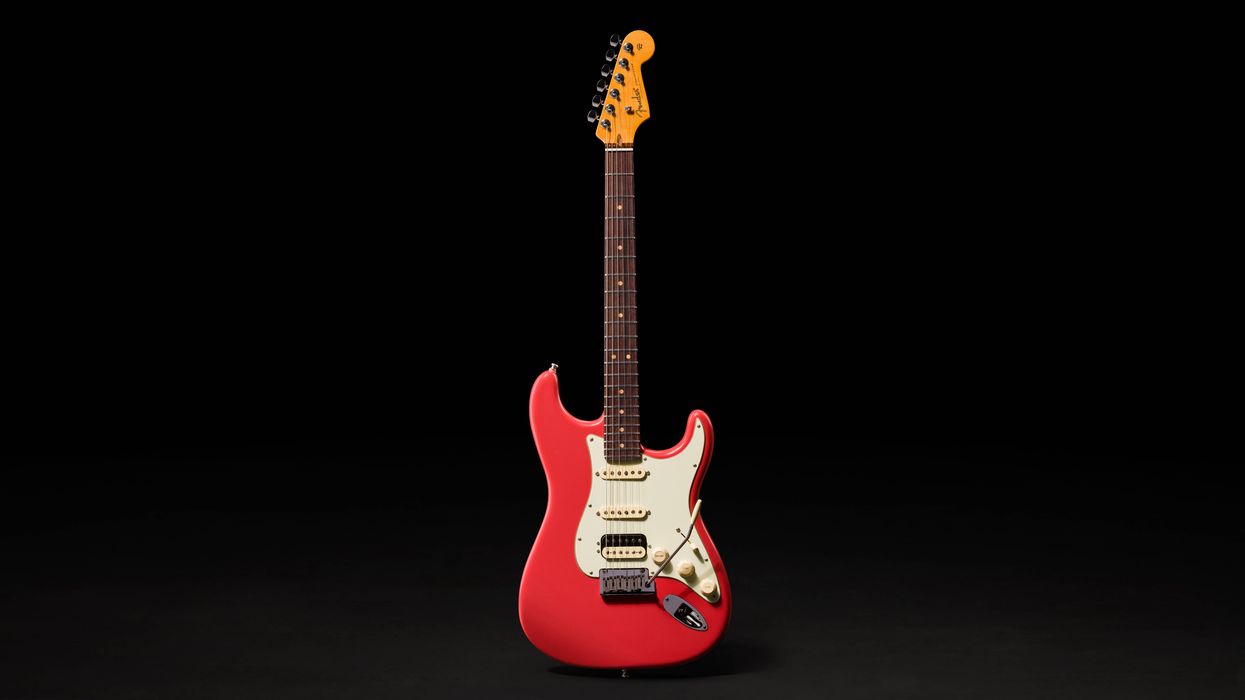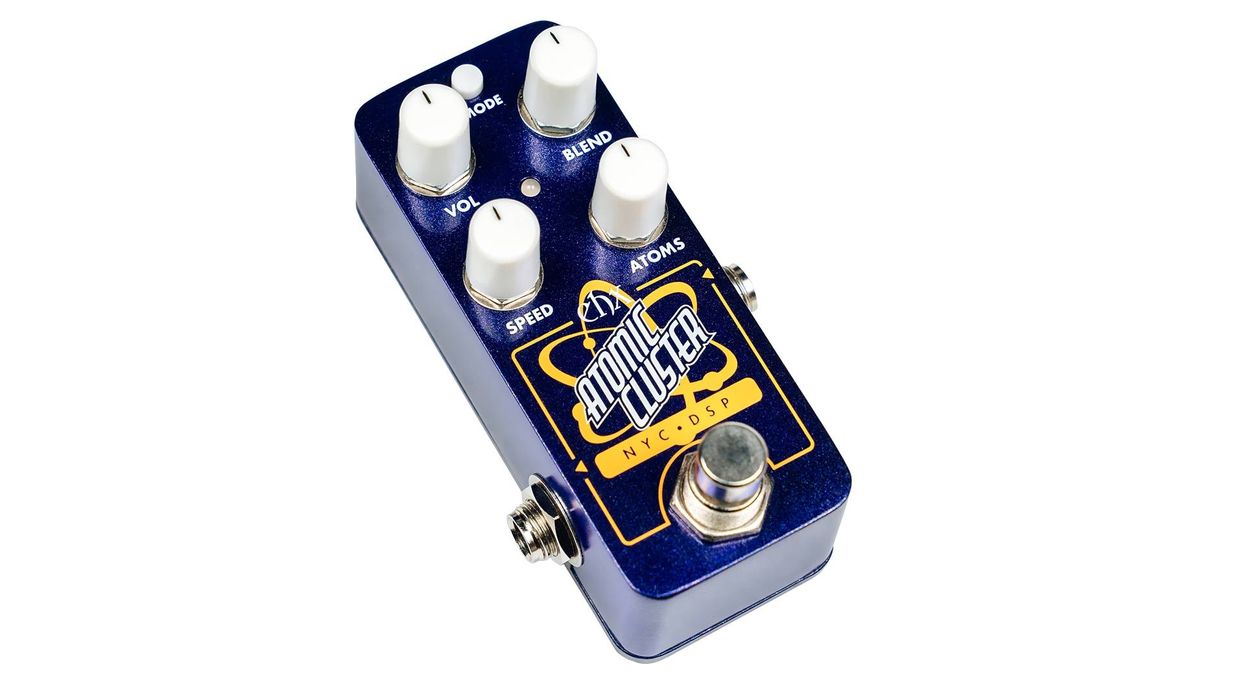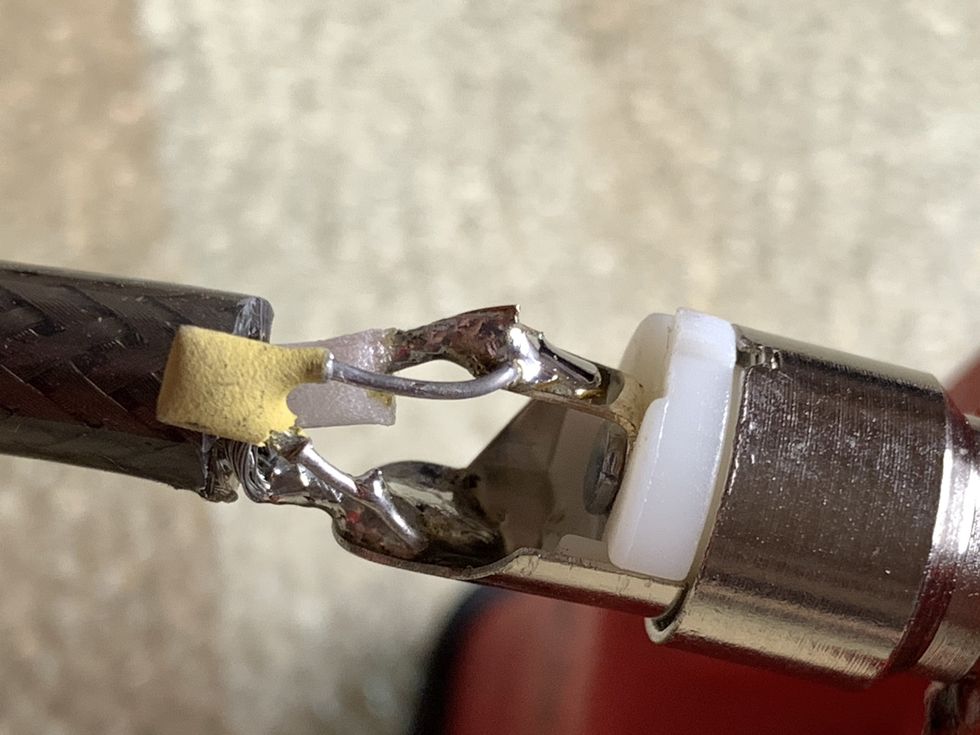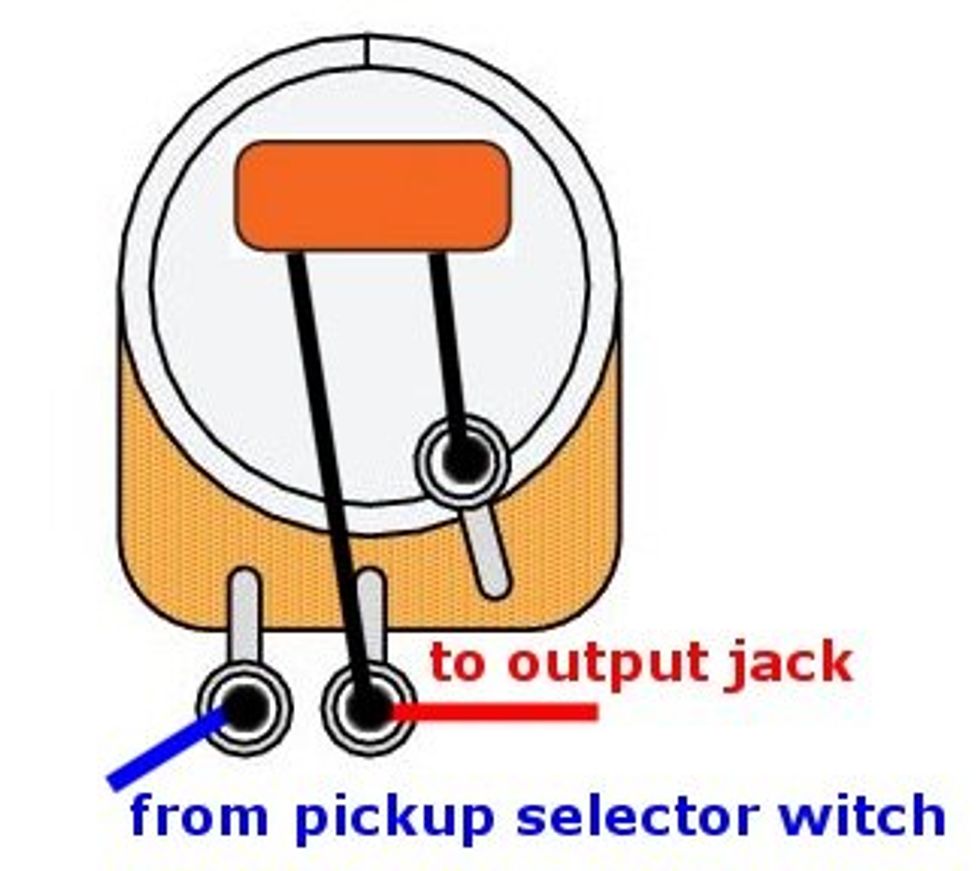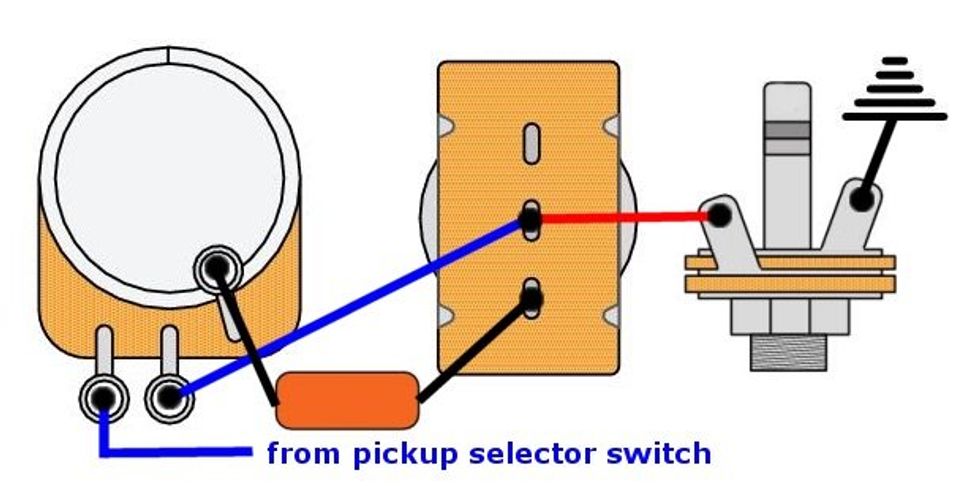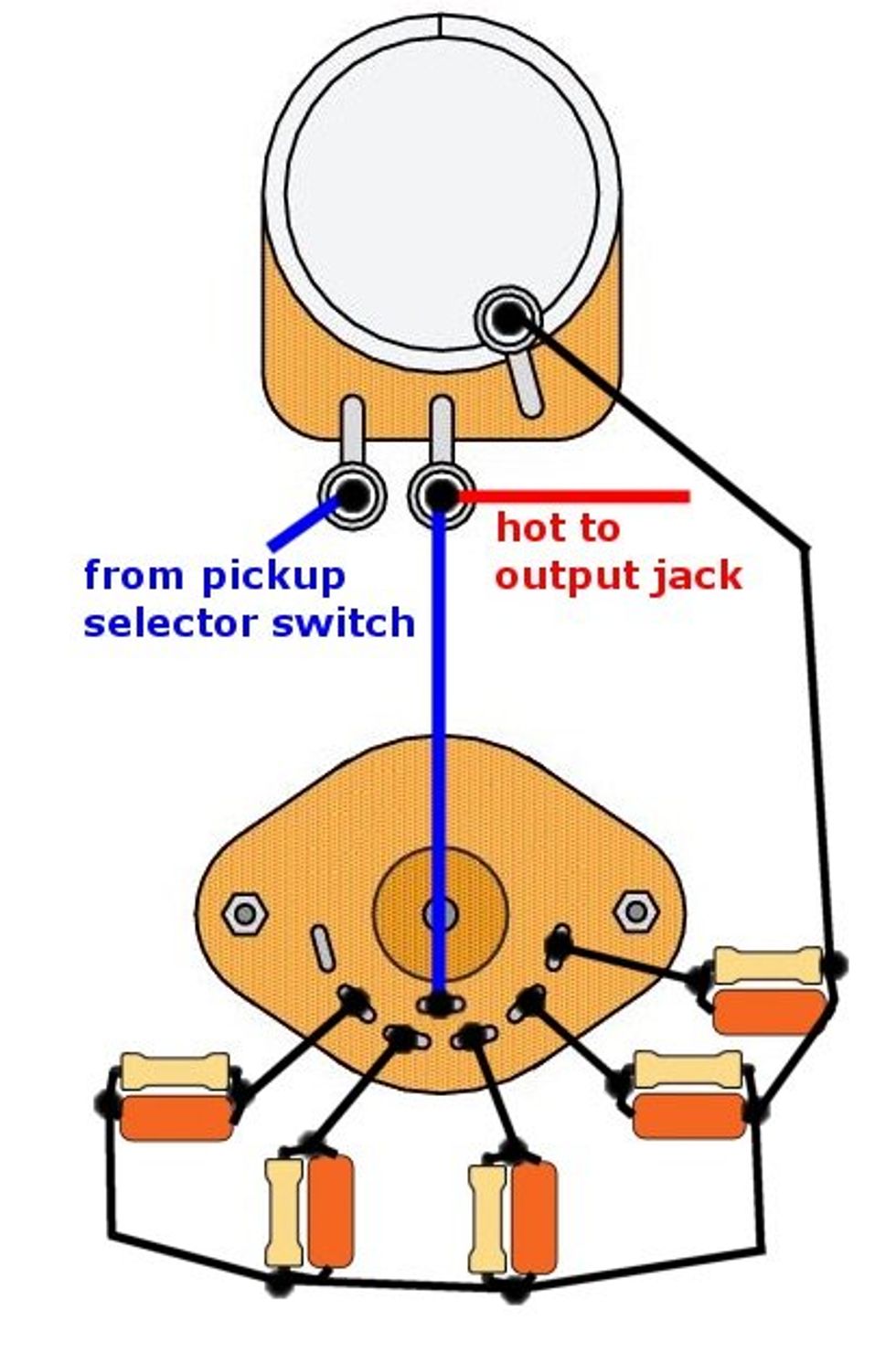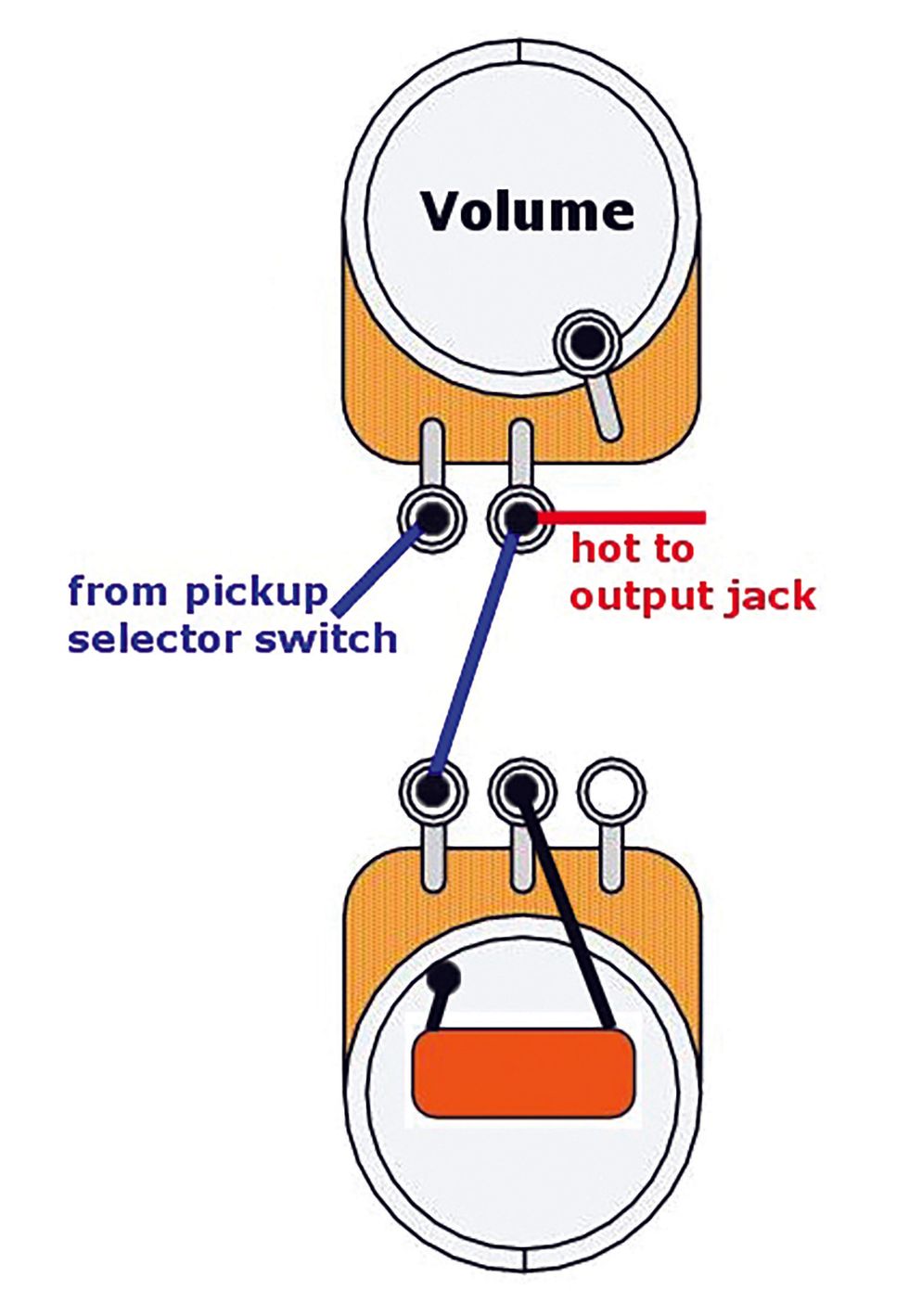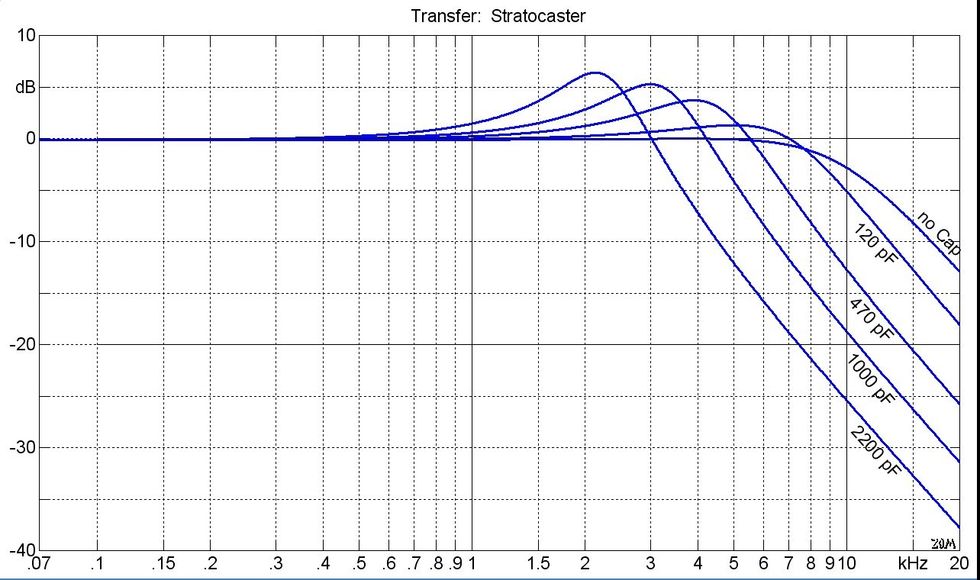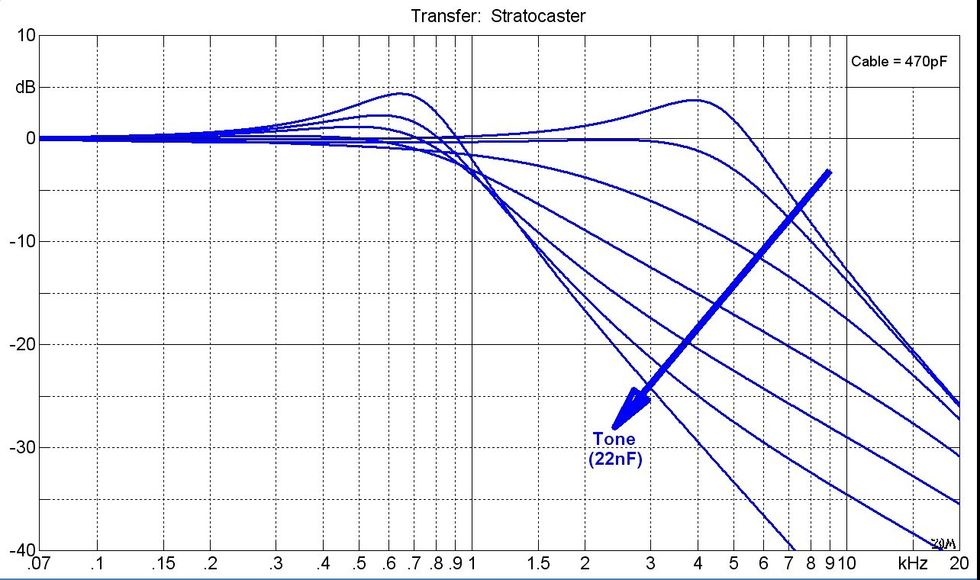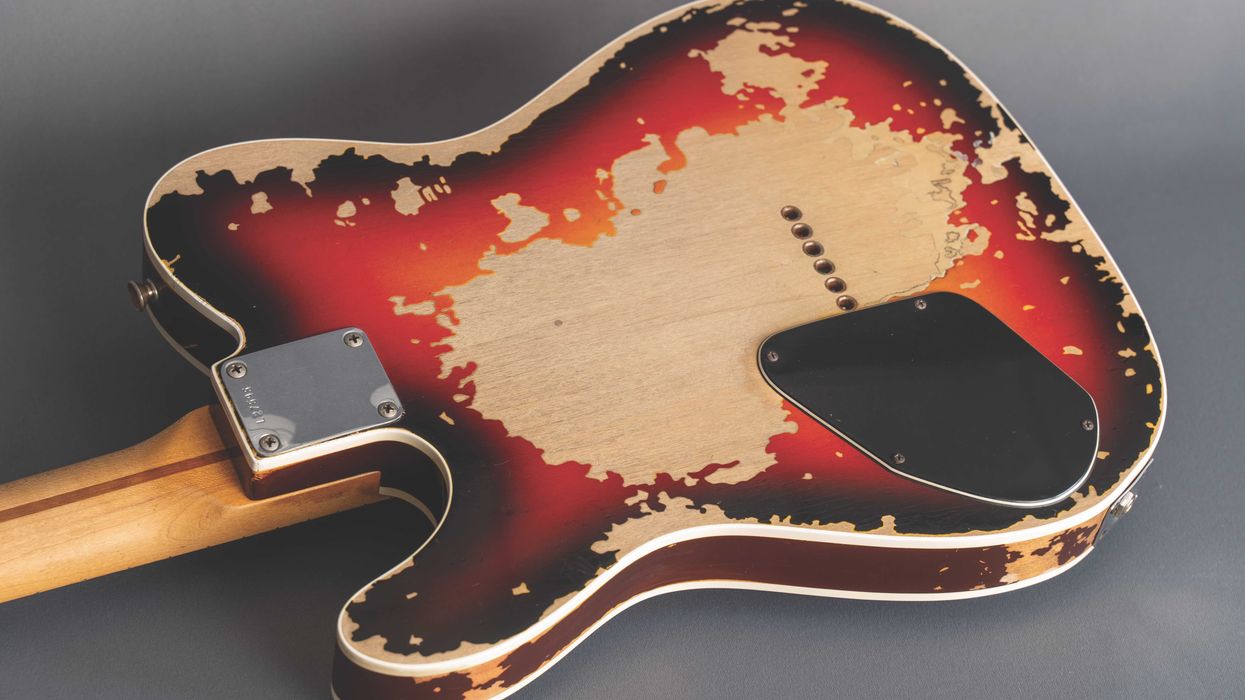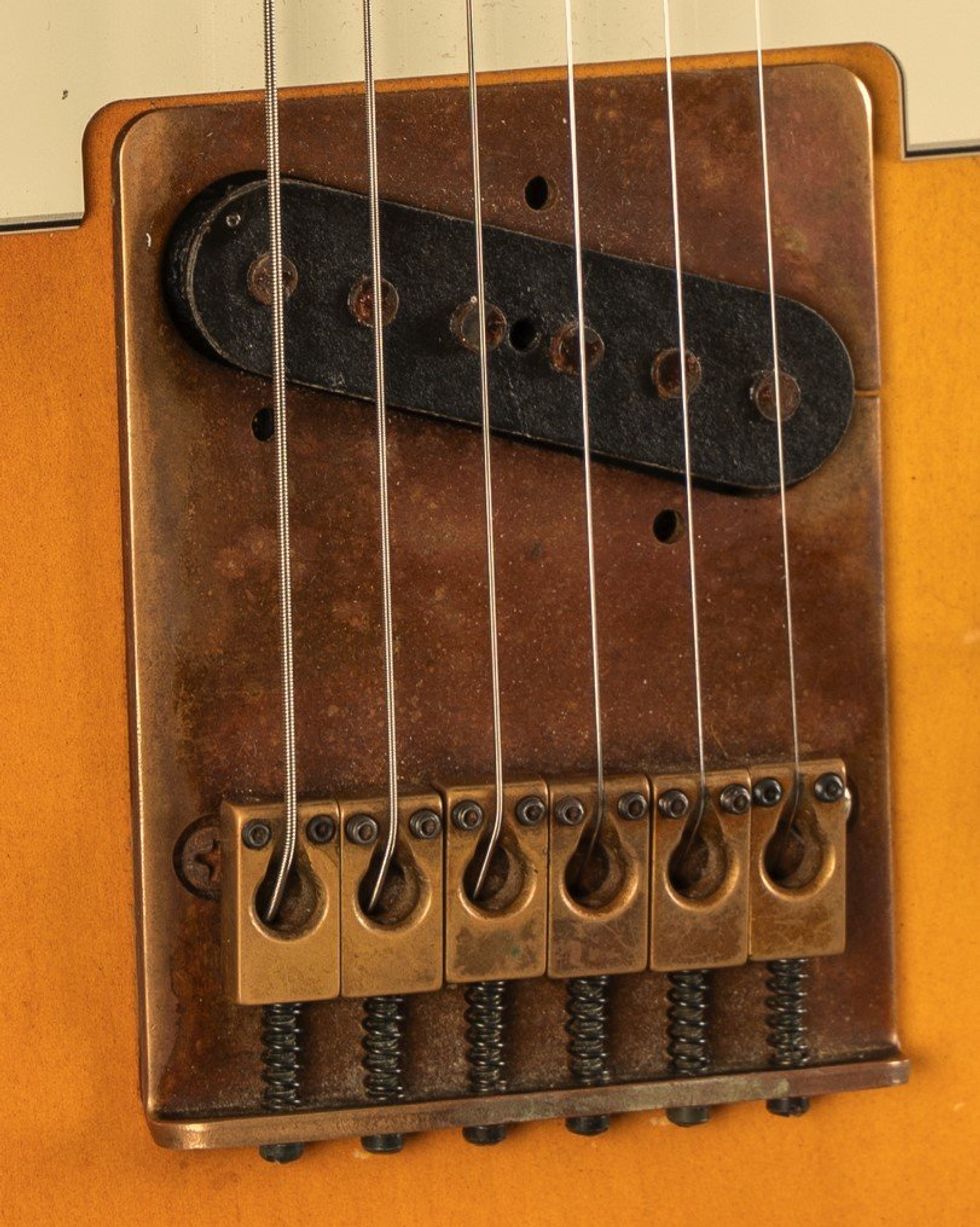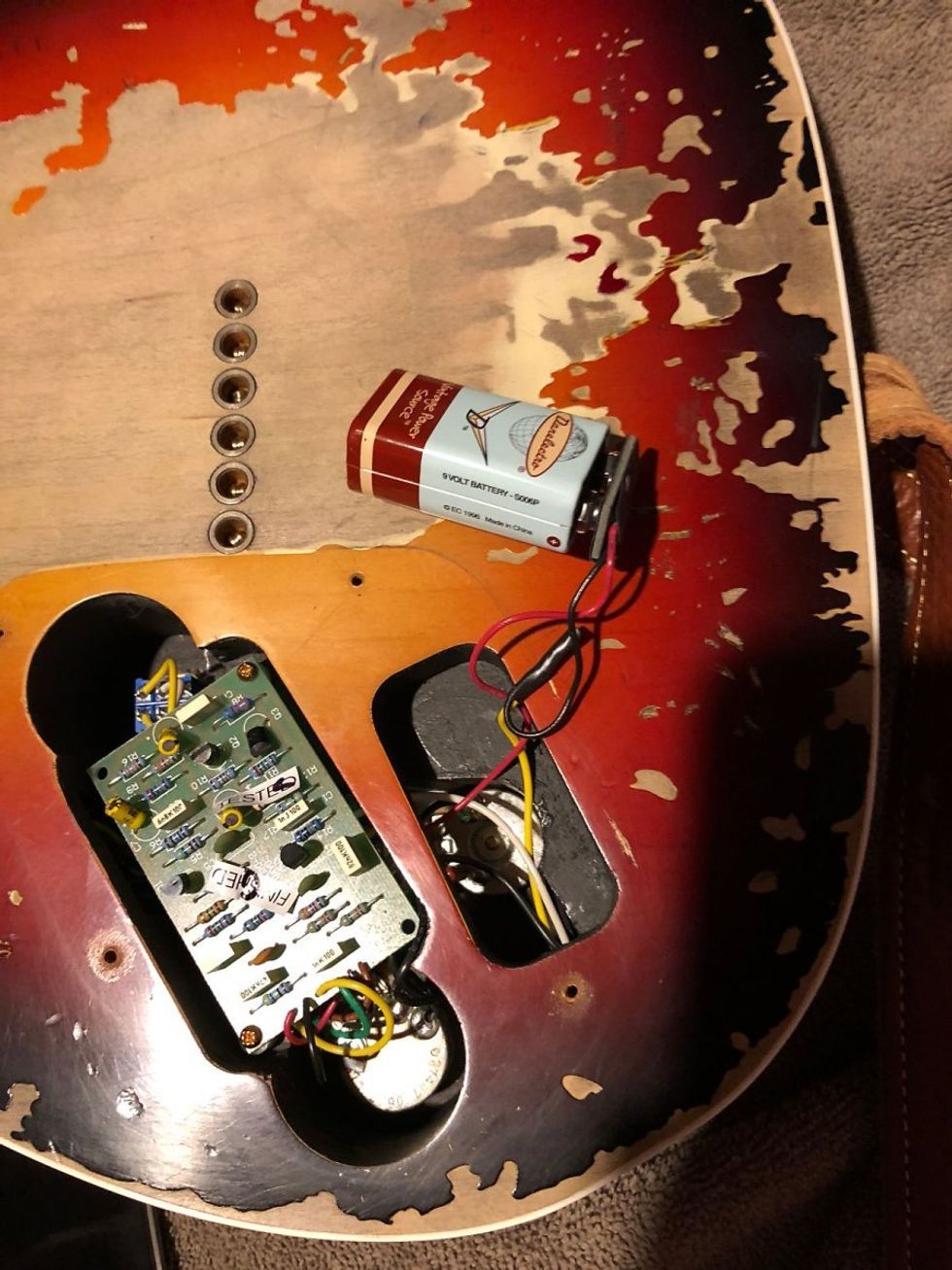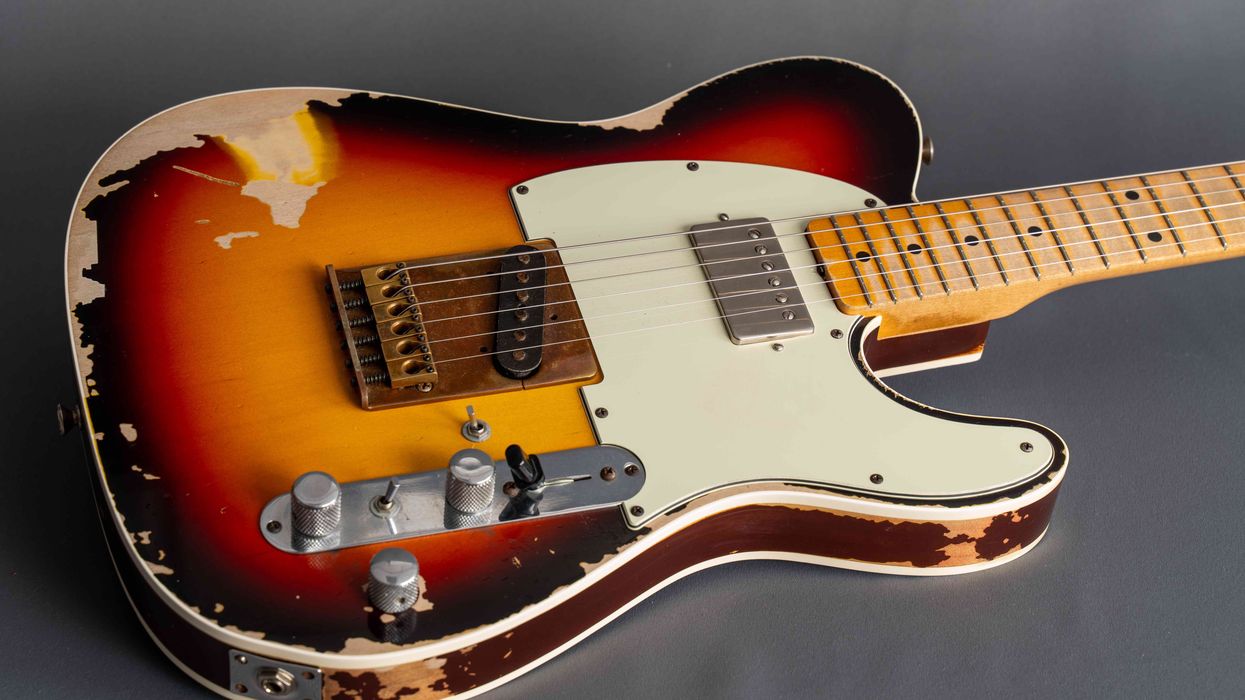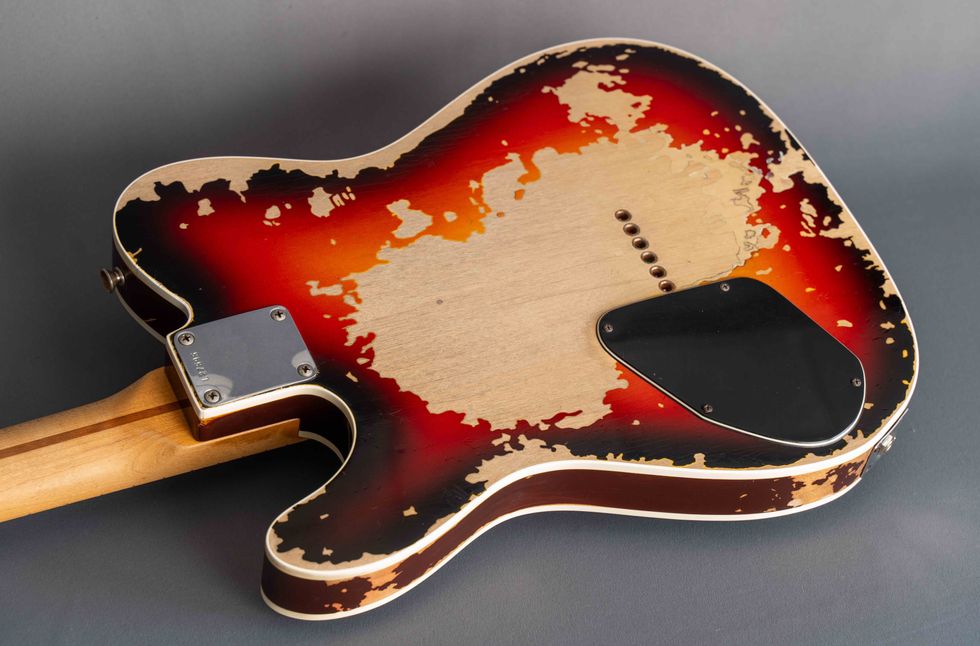Hello and welcome back to Mod Garage. This year, the Fender Stratocaster is celebrating its 70th birthday. Happy birthday, and all the best for your next 70 years! To celebrate, I chose a Strat as our guinea pig for this month. But everything we are talking about applies to all single-coil-equipped guitars.
Let’s have a deep look into what can be done to get rid of single-coil hum, which can be very annoying, especially when playing live. I’m sure you all know the situation: Your band managed to get an important Friday night gig at, let’s say, Bob’s Country Bunker. You and your bandmates arrive in time to set up your equipment, naturally with everything plugged into the same circuit as Bob’s popcorn machine, dishwasher, and sandwich maker. You plug in your Strat, turn up your amp, and there’s a loud humming noise coming out of it.
A single-coil pickup has one coil with six magnet rods and two bobbins holding everything together. It not only picks up the strings, but also all kinds of external magnetic fields generated by transformers and other electromagnetic devices. But when two coils are wound in opposite directions and are working together, the hum will get canceled. This is an old principle dating back to the beginning of the 20th century, and it’s how a humbucker pickup works. In the past, guitarists had to struggle with radio stations, fluorescent tubes, transformers, and the like; today, it’s more digital fallout and, of course, digital power supplies of all kinds.
The pickup industry created all kinds of hum-canceling pickups in single-coil shape, most commonly stacked and double-rail-style pickups. So, a humbucker pickup can be the ticket out of such unpleasant live situations. But all of these options generate a different magnetic field compared to a single-coil pickup, resulting in a different tone. The resonant frequency is shifted downwards a little bit because the ohmic resistance and inductance of the two coils are added together. The tone gets milder and warmer, with more midrange—you all know this tone. Splitting such a humbucker will sound more single-coil-like, but it will pick up hum again. Connecting both coils in parallel rather than in series will also sound more single-coil-like and is hum-canceling, but it’s not a real single-coil tone.
Using a reverse wound, reverse polarity (RWRP) pickup such as a Strat’s middle pickup will get you at least two hum-free switching positions (bridge+middle and neck+middle), but even this sounds different. Going active is another way to fight humming noises, and these special pickups sound more or less like a real single-coil, too.
But what if you don’t want to compromise? Is pure single-coil tone with no hum possible? Yes and no! It is possible to come close, but one day, a digital gremlin may find a way to annoy you to a certain degree. And there are extreme situations where only a humbucker will work.
One step in the right direction is shielding the pickups and cavity of your guitar. Shielding the compartment of a guitar the right way is a challenge on its own, and I will cover this in a future installment of this column. But even if all the shielding is done the right way, the sound of the pickup will be altered to a certain degree, which is the nature of the beast. And the shielding is always there, so you can’t switch between pure single-coil and shielded single-coil tone.
So, what about switchable hum-canceling for your guitar? This way you could have both: pure single-coil tone and hum-free operation when needed. And if this could not only be made switchable but also controllable, you could balance your tone between the two.
Here is a solution based on principles from Bill Lawrence, which my dear friend Bernd C. Meiser from the BSM company has refined in order to make it more controllable: a variable dummy coil.
“But what if you don’t want to compromise? Is pure single-coil tone with no hum possible? Yes and no!”
In simple terms, a dummy coil is an additional pickup that is identical to the other pickups but without magnets. It has a phase, but no polarity. A dummy coil accepts the electric signal created by the magnetic single-coil pickup and reverses it, which will remove a large portion of the hum. In the process, a very small amount of the treble signal is lost as well. However, this treble loss is far less compared to stacked or dual-rail humbuckers.
The specs of the dummy coil need to be close to the pickup you are complementing. So, any universal dummy coils advertised to work with all single-coil pickups will only work to a certain degree but not perfectly. Instead, it’s best if you order a dummy coil that matches your pickup. The company who made your pickup will know the formula, and a dummy coil from them will be super effective. If that pickup is from a larger manufacturer, you’ll need to find out specific parameters—wire gauge, wire type, number of turns—so a custom pickup company can make a matching dummy coil for you.
The simplest way to set up a dummy coil would be to connect it permanently, so it’s 100 percent active all the time. For more flexibility, you can add a switch to turn the dummy coil on and off. But the most flexible way is to use a pot to control the dummy coil, so you can dial in pure single-coil tone, 100 percent dummy-coil hum-removing, and everything in between—in other words, so you can balance tone and hum-free-ness depending on the certain playing situation.
To do so, connect a 0.01 uF capacitor in parallel to the dummy coil. The high-end frequencies will no longer pass the dummy coil and its inductance; they will be drained low-resistance to ground. For the bass frequencies, the capacitor is still high-resistance so the dummy coil is active. This way you will have humbucking functionality for the bass frequencies, but pure single-coil tone in the high frequencies—what a perfect and clever solution from Bill Lawrence. If you now connect the capacitor and the dummy coil to a pot, you have a controllable dummy coil as described above.
You can experiment with the capacitor value for fine-tuning your system; 0.01 μF is a pretty good value to start. With a smaller cap, you shift the humbucking effect toward the high frequencies and vice versa. A smaller cap means more overall humbucking (bass and highs) and a larger cap means less overall humbucking, with the high and middle frequencies staying untouched.
A Stratocaster is perfect for this mod because it has two tone controls. One will be converted to a Telecaster-style master tone control, while the other will become the new dummy-coil controller.
For a Stratocaster with three vintage flavored single-coil pickups, I recommend the following pot configuration (all audio taper): 250k volume, 500k tone, 500k dummy-coil controller. This way, in humbucking mode, the two coils are connected in series rather than in parallel, so the resonance peak will be dampened. The two 500k pots will help compensate for this. The 250k volume is always the way to go in a passive guitar system to ensure the best and most even control. The 500k tone pot can be a little bit over the top in pure single-coil mode, but simply roll it down a little and you are in the 250k ballpark—problem solved!
Here we go for the wiring. It’s not hard to do and mostly uses the parts that are already there:
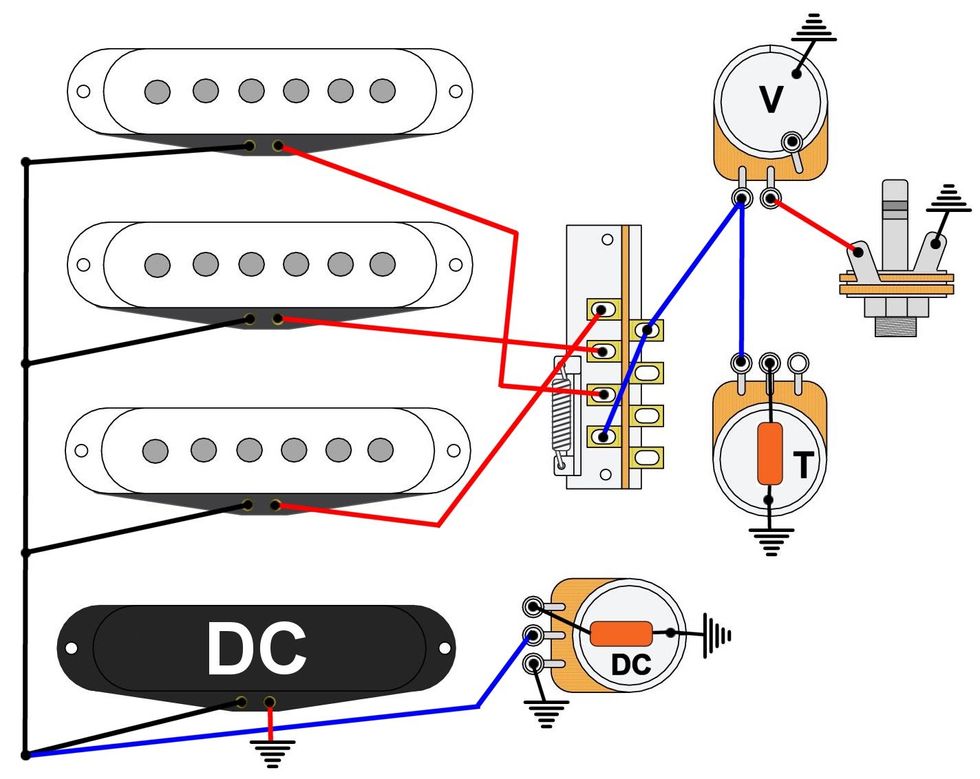
Illustration courtesy Singlecoil
That’s it! Next month, we will talk about some alternative ways to service a Stratocaster that can be real time savers, so stay tuned.
Until then ... keep on modding!
